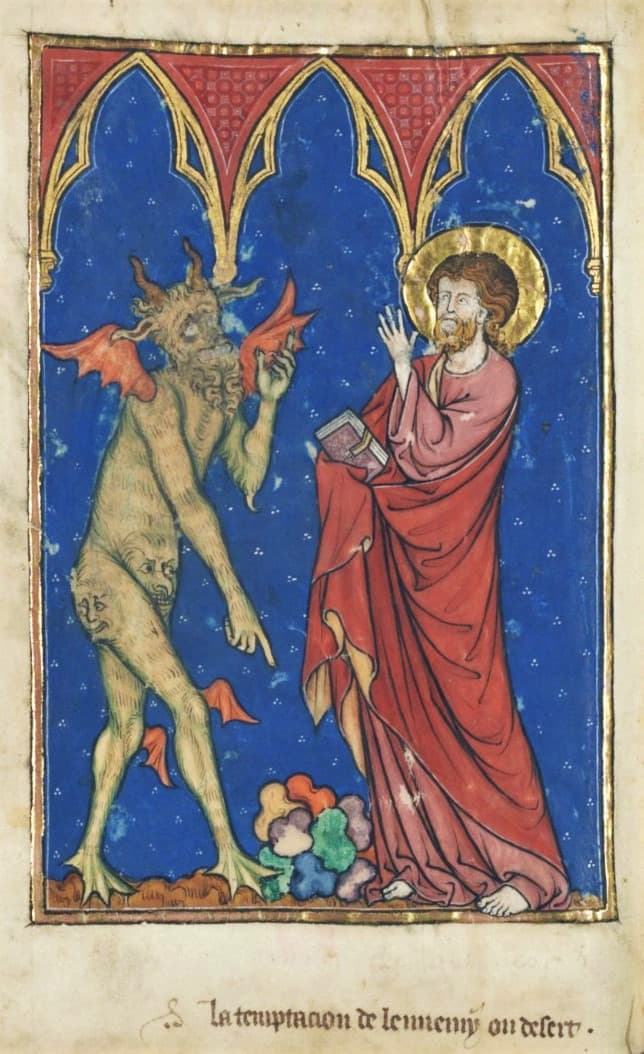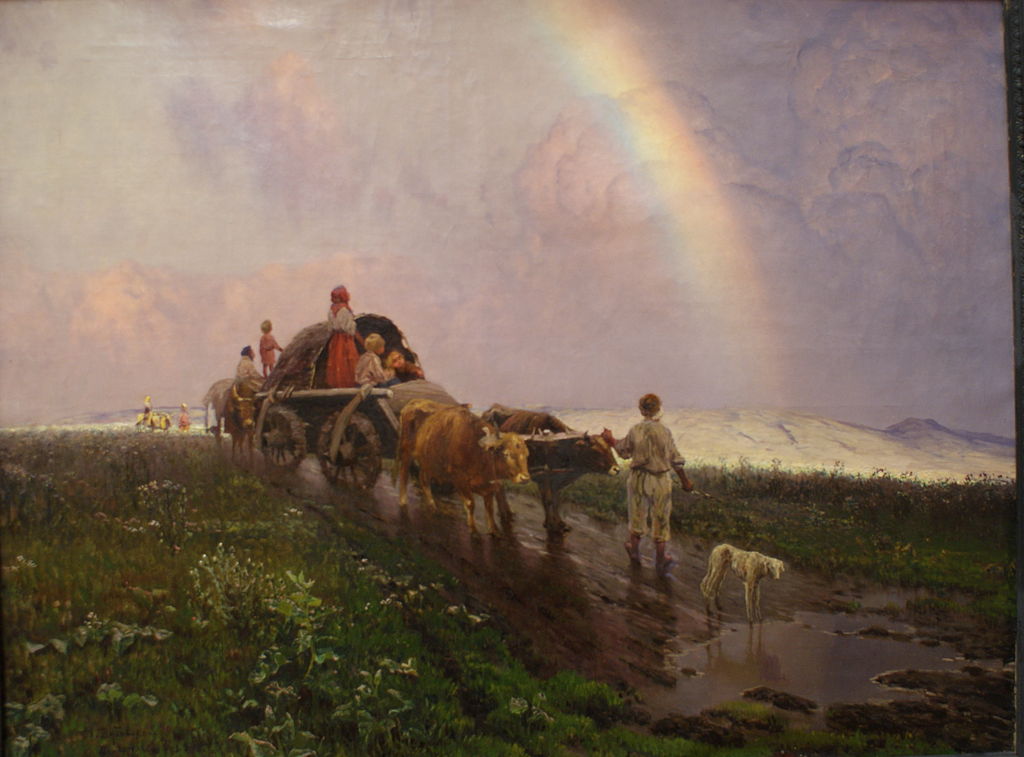Editions Artège has brought out an unpublished French translation of Hilaire Belloc’s The Great Heresies. By showing how the great heresies of Catholicism result from permanent forms of mind in history, the British thinker underlined the genius of Catholicism and its incompatibility with modernity, itself the fruit of the Protestant mind.
The publication of this translation is an opportunity to discover the prolific author that was Hilaire Belloc. A historian by training, a close friend of G. K. Chesterton, but also a poet, novelist, member of parliament and military chronicler, Hilaire Belloc was British on his mother’s side but a fervent Catholic, born in France in 1870, to a French father. In Les Grandes Hérésies (The Great Heresies), first published in 1938, Belloc presents and analyzes the main heresies that successively opposed Catholicism: Arianism; what he calls the Mohammedan heresy; the Albigensian heresy; and Protestantism.
In the introduction to the book, the author recalls the etymology of the word “heresy” which comes from the Greek hairetikos meaning “who chooses.” A heretic is one who adheres to a dogma except for one aspect of it that he specifically chooses to reject. Heresy is characterized by the nature of that choice which corrupts the unity of the dogma in question. Belloc thus defines heresy as “the enterprise of deconstructing a unified and homogeneous body of doctrine by the negation of an inseparable element of the whole.” For example, the heresies of the early centuries of the Church specifically attacked the mystery of the incarnation. With Arianism, then Nestorianism and Monophysitism, it was a question of debating first the exact nature of Christ, then the ways in which his two human and divine natures coexisted.
The Permanent Temptation to Rationalize Dogma
Behind the conceptual and dogmatic battles waged between the Church and heresies, Hilaire Belloc perceived, however, something other than simple intellectual quarrels over dogmatic details. The great heresies actually embodied permanent types of mindsets in history. Belloc thus highlights the propensity of the great heretical currents to rationalize, simplify and demystify Catholic dogma.
The first great heresy that was Arianism illustrates this tendency. Arianism, doctrine professed by the Alexandrian Christian theologian Arius at the beginning of the 4th century, denied the divine nature of Jesus Christ. For the Arians, Christ was the Son of God, but he was still a man and not a God. It was by confronting the supporters of Arius that the Catholic Church proclaimed the dogma of the consubstantiality of the Son and the Father at the Council of Nicaea in 325.
Despite all the care taken by the Church to choose the vocabulary used to qualify the relation between the Son and the Father, the Arian heresy continued in new forms which refused to admit the strict equality between the Son and the Father. Arianism therefore sought to elucidate the question of the incarnation, the mystery of which it refused.
Other ancient heresies such as Nestorianism and Monophysitism pursued this desire to rationally solve the “problem” of the incarnation. It was necessary to explain by reason the nature of this son of God who was Christ. For the Nestorians, the divine and human natures of Christ were necessarily strictly separated, man and God cohabited in the figure of Christ. For the Monophysites, it was the human nature of Christ that was called into question. In both cases, God did not become fully man. In the midst of these attempts at logical and rational explanations, the Church maintained its complex and mysterious dogma of the one but triune God.
It is this same desire for simplification and rationalization that Hilaire Belloc perceives in Islam, which he qualifies as Christian heresy. Coming from a pagan background on the margins of the Roman Empire that had become Christian, Muhammad adopted a Christianity purged of its dogmatic complexities.
Islam takes up the idea of a single god, creator of the world and granting life after death, but denies the incarnation by making Jesus a prophet. For the British historian, Islam foreshadows the heretical quest for rationalism and the abolition of the Catholic mysteries that was then the Reformation. All these great heresies had in common the simplification of Catholic dogma by trying to purge it of the mysteries that proud human reason could not grasp.
The Heretical Rejection of Matter
For Belloc, the study of heresies reveals another tendency of the mind that also emerges chronically in history—that consisting in condemning matter. This matter is bad while the spirit is the only source of the good. The Albigensian heresy perfectly embodied this tendency by condemning any carnal compromise with matter: sexual relations, marriage, procreation, consumption of meat and alcohol were prohibited. The ideal of purity advocated by the Cathars (from the Greek katharos: pure) conceived matter as intrinsically evil. Belloc sees in it the resurgence of the ancient Manichean heresy but also the precursor of Protestant puritanism. These heresies are all based on the mortifying detestation of matter and carnal life; whereas the Catholic Church condemns this dualism and values the union of spirit and flesh.
Rejection of mystery, thirst for rationalism and refusal to inhabit the world carnally are the pillars of the great heretical currents. However, Belloc does not reduce heresies to their religious and spiritual dimensions. As a historian, he is interested in the practical reasons for the success of the great heresies. He thus notes the social dimension of heresies, which can feed on worldly postures and use the dynamics of local particularisms to prosper. Arianism thus spread within the old pagan elites and in Roman military circles, anxious to differentiate themselves from the very popular religion that Catholicism was becoming.
The Albigensian heresy was also a means for local identities to assert themselves in medieval southern France. Belloc is fascinated by the continuing success of Islam. He attributes this success in particular to the fact that the Mohammedan heresy developed outside the Church and was able to benefit for centuries from a constant renewal of its fighters who also came from barbarian worlds. Noting the possible compatibility between Islam and the modern world, he prophesied a probable return of the vitality of Islam, despite the “physical paralysis” in which this religion found itself, when he wrote his book in the middle of the 20th century.
The Revolution of the Protestant Heresy
But it is to the Protestant heresy that Belloc devotes his longest chapter. It is a fundamental heresy from which modernity emerged and which shook the foundations of the Church. He traces its genesis in detail during the 14th and 15th centuries. Belloc considers, however, that Protestantism was not condemned to become the heretical religion it has become. The Reformation could have been a simple reform of the Catholic Church without altering its faith or dogma. The historian finely traces how Protestantism finally became heretical and above all how it altered Catholicism and then generated the spirit of modernity.
For Belloc, the particularity of Protestantism is to constitute more a “moral atmosphere” and a disposition of the mind than a religion. Calvin’s doctrine no longer governs the modern world, but its spirit would endure: “the fruits of Protestantism prove to be permanent, despite the fact that its doctrine has disappeared.” Founded on the contestation of authorities and the primacy of rational individual examination, Protestantism dissolved its own theological and scriptural foundations to give birth to modernity.
Belloc’s entire book tends to highlight the specificities of Catholicism, which has never yielded to the temptations of simplification and rationalization of the mysteries of its dogma. For the English author, however, the Protestant Reformation constitutes a turning point which manages to make Catholicism doubt its own dogma. Secularization of the Protestant spirit, modernity also appears as the fruit of this doubt of the Church on itself.
The Great Heresies is the work of a historian who assumes his Catholic fervor and tries to explain why the study of heresies allows us to better understand both Catholicism and the modern world. By becoming incarnate on Earth to save mankind from original sin, the Christian God irrevocably entered into history. The great religious currents that appeared afterwards are all linked to Christianity. Religion can only be Catholic or heretical.
For Belloc, the advent of modernity cannot be a return to the noble paganism of antiquity. This return is impossible after the coming of the Savior. Unable to make people forget Christ, modernity can only be an inversion of Catholicism. Modernity and Catholicism are then be engaged in a struggle to the death. Belloc admits that the organic laws of history could support the near-end of Catholicism. But the faith of the Catholic author forces him to maintain the hope of a safeguard of the Church and the resurgence of its mysteries.
Bertrand Garandeau is an anarcho-conservative sovereignist, based in France. This article appears through the kind courtesy of PHILITT.
Featured: “First Temptation of Christ,” fol. 28v, Livre d’images de Madame Marie; ca. 1285-1290.

